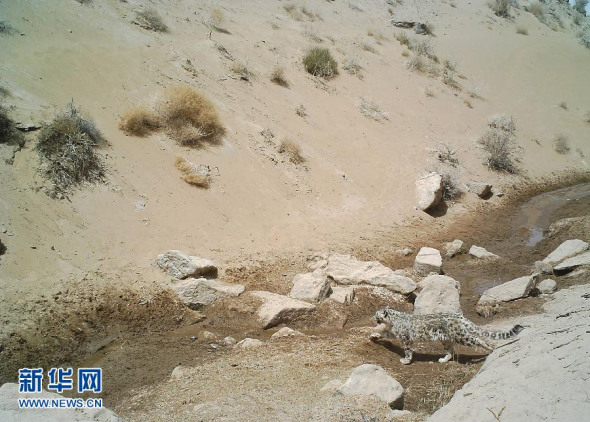

Photo taken on April 25, 2014 shows a snow leopard in Altunshan Nature Reserve of northwest China's Xinjiang Uygur Autonomous Region. This is also the first time that snow leopard caught on camera in this area. (Xinhua photo)
Images of the rare snow leopard have been captured in a remote nature reserve in northwest China's Xinjiang Uygur Autonomous Region, researchers said on Wednesday.
This is the first time researchers with the Xinjiang Lop Nur Wild Camel National Nature Reserve, which was founded in 1986, have managed to obtain photographic evidence of the endangered animal.
The four images were captured by infrared cameras installed near three water sources across the Altun Mountain range, according to researcher Sagingul.
The images, which may be of more than one leopard, showed the animal to be in good health, said the researcher.
Snow leopards, one of China's Class A protected animals, are usually found in the Himalayan ranges of central and south Asia at altitudes between 3,000 and 5,500 meters.
The animal has rarely been seen in the wild since last century due to loss of habitat and poaching. There are an estimated 3,500 to 7,000 snow leopards living in the wild, in addition to around 650 in captivity worldwide.
Last April, the researchers launched a large-scale monitoring program, installing more than 20 infrared cameras near nine water resources in the reserve. From Nov. 8 to 16 this year, they collected more than 20,000 photos and video clips.
Some of the photos showed other endangered animals, including wild camels, Tibetan wild asses and their foals.
"Based on the images, we've concluded that there is a considerable population of herbivores and large predators in the area. This indicates a healthy, balanced ecosystem," said Sagingul.
Copyright ©1999-2018
Chinanews.com. All rights reserved.
Reproduction in whole or in part without permission is prohibited.